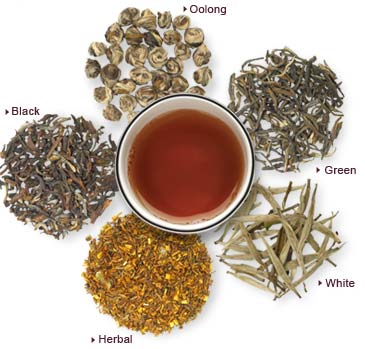
Tea types
Black tea
Although it is called Black tea in the West, it is recognized as Red tea in China thanks to its red color of the liquid when the tea is brewed. Black tea are specially picked and processed by hand for dark, rich and potent drink with a large quantity of health benefits.
Oolong Tea
The diverse group of tea that encompasses the oxidation spectrum between black and green is known as oolong tea. Due to the assorted cultivation and production methods, oolong tea has a variety of flavors and aromas, the lighter brews are more fruity, flowery, and/or sweet, while the darker versions are more roasted and woody.
White tea
White tea is produced from young leaves and new growth buds. Each year, white tea can be picked for a short period of time, consequently, it becomes more costly than other types of teas and rare. However, tea connoisseurs are fond of the sweet and delicate flavor, silky finish and pale color. White tea is really close to natural product compared to other tea leaves and composed of much anti-aging antioxidants.
Jasmine tea
To make a nice Jasmine tea, Jasmine flowers need to be plucked in the morning while the small petals are still closed. Then, they will be kept in a cool place till night. When the temperature cools, which is around six to eight in the evening, the tiny petals begin to open. It takes about 4 hours till the tea absorb the flavor and fragrance of the Jasmine blossoms. What you get us the healthy tea with fresh taste and fragrances of Jasmine.
Yellow tea
Yellow tea has some substance which provides the benefits both from White and Green tea. Yellow tea was quite popular in China and the method of making it had been lost until 1970s that it was rediscovered. Moist heating is important for making yellow tea in order to get rid of the grassy notes of tea and produce good taste. You might not want to miss the tasteful Yellow tea.
Premium tea
Some good tips how to make Premium tea us to leave it for a few days for the oxidation and toast in steamed or hit pans for a rich but fresh taste. Just like wine, the climate, soil, style of processing, area and time of picking can have huge effects on the finish and flavor.
